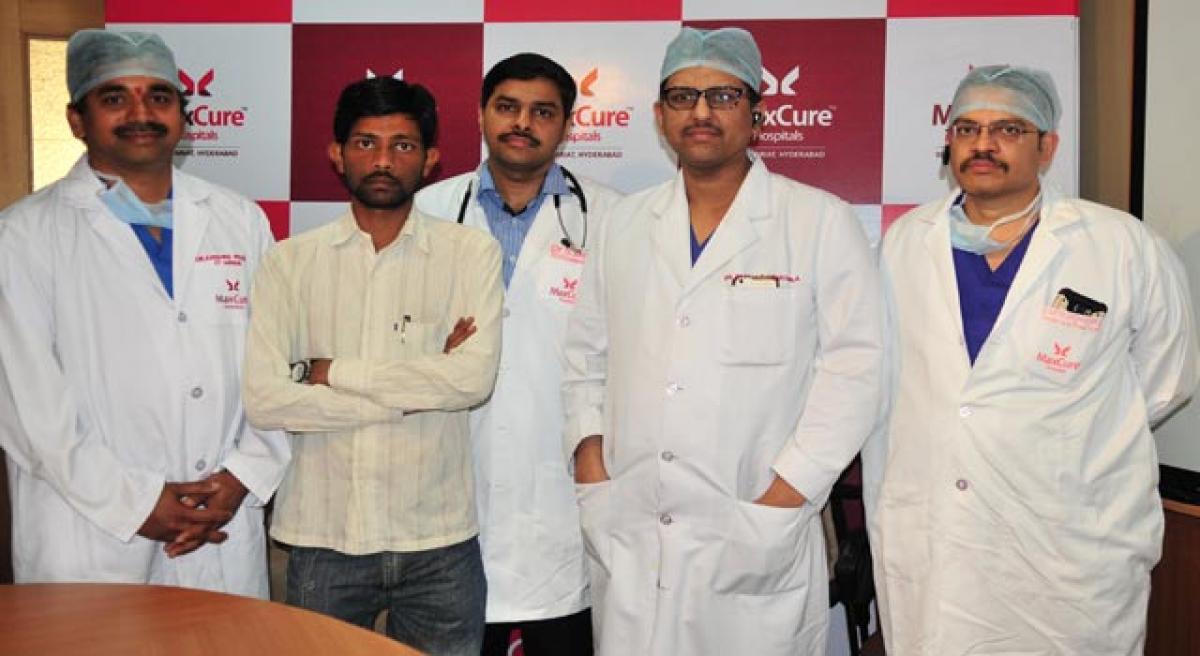Live
- Are strict laws needed to ensure MLAs attend Assembly sessions?
- Centre leveraging innovation, tech for capacity building among teachers
- Oppn members seek more time for JPC on Waqf Bill
- Grievances flood Lokesh’s Praja Darbar
- PM underscores need to link co-op movement with circular economy
- Why Rake Up The Issue After 44 Years? SC upholds ‘secular, socialist’ in Preamble
- Kia hits milestone of 1 lakh CKD exports from Anantapur plant
- Maha tussle delays formation of new govt
- Telangana spurns Adani benevolence
- Samajwadi MP among 400 charged for Sambhal violence
Just In

MaxCure Hospitals conducted a meeting on ‘What Happens When Congenital Heart Diseases Goes Undiagnosed?’ and also shared a case study of congenital heart disease of a 23-year-old male. The event was held on Thursday at My Home Sarovar Plaza, beside MaxCure Hospitals.
MaxCure Hospitals conducted a meeting on ‘What Happens When Congenital Heart Diseases Goes Undiagnosed?’ and also shared a case study of congenital heart disease of a 23-year-old male. The event was held on Thursday at My Home Sarovar Plaza, beside MaxCure Hospitals.
Speaking on the occasion Dr Satya Sridhar Kale, Consultant Cardiothoracic Surgeon, MaxCure Hospitals, said, “Congenital heart defects are very regular. About 40 per cent of congenital heart defects go undiagnosed. The treatment for these ailments has improved vastly in the last several decades, however, with the age of the patient, the risk increases as the heart gets damaged with each passing year.”
“Parents and pediatricians must watch out for heart disease symptoms. In infants, the typical symptoms include fatigue or sweating around the head during feeding, slow growth, fast breathing when at rest or asleep, a sign of abnormally low oxygen levels. In slightly older children typically complain of heart palpitation and dizziness, getting tired easily with physical exertion and inability to keep up with playmates,” he added.
Recently, Dr Pankaj V Jariwala, Dr Satya Sridhar and their team members came across, Imtiyaz, a 23-year-old man, who was suffering from a rare congenital medical condition ‘Tetralogy of Fallot’ (ToF), where impure blood mixes with pure blood.
Sharing about the case study they said that Imtiyaz, came to MaxCure Hospitals and complained of breathlessness. After some investigation, the doctors found that he is suffering from ‘Cyanotic Congenital’ heart disease.
Dr Pankaj V Jariwala, Sr. Interventional Cardiologist, said, “In a condition like this, the patient has four abnormalities in the heart, which are developed in the fetal stage - hole in the heart; narrowing of arteries supplying to lungs; origin of aorta from both the ventricles called as overriding of aorta- major blood vessel supplying normally originates from left ventricle and hypertrophy of right ventricle. ‘ToF’ occurs in about 10 in 2,000 newborns, equally in male and female.”
“In Imtiyaz’s case the left ventricular clot and aortic dissection was diagnosed. Aortic dissection occurs when a tear in the inside of the aorta causes blood to flow between the layers of the wall of the aorta, forcing the layers apart. There are a few reports of ToF with LV clot and ToF with aortic dissection combination. But the combination of ToF with clot with aortic dissection is not described in the medical literature and this is the first case to be reported. Our CT Anesthetist, Dr Lakshman played a critical role in this case,” Dr Pankaj added.
Listing the symptoms of post-surgery, Dr Simanchal Mishra, Sr Consultant Neurologist, said, “Neurological complication post high-risk cases are common conditions like brain stroke, infection, interruption of blood flow to the brain occur often. In this case, Imityaz developed a stroke and he lost his speech. Post-surgery we gave him a speech therapy and he is back to normal. However, this is not the same in every case.”
Speaking on the occasion, Imtiyaz, said, “I am grateful the surgeons here, who were willing to take up my case and perform the surgery, and I am glad that the outcome was very good. I was scared when I lost speech and doctors helped me to regain my speech I am thankful to them.”

© 2024 Hyderabad Media House Limited/The Hans India. All rights reserved. Powered by hocalwire.com







